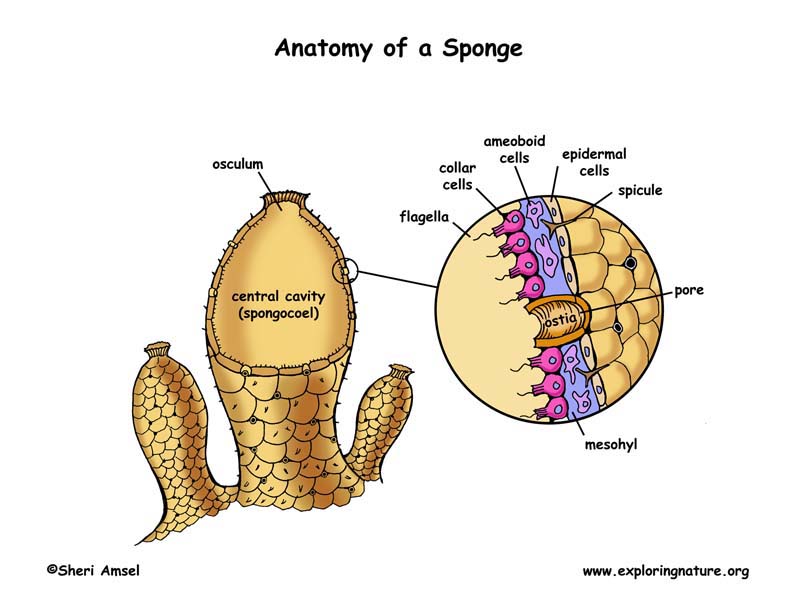

But, each sponge can function as both a male and a female. Like other animals sponges produce sperm, which can fertilize egg cells in another individual. The flow carries particles of food, and oxygen too, into the sponge to be captured by its cells. If they don't move or photosynthesize, how do they feed themselves? Sponges eat by pumping water through the hollow canals of their porous bodies, using microscopic beating hairs on special collar cells lining the canals. If too much water is lost from body cells, organisms become dehydrated and may die. Sponges can't do this, although a few species host cyanobacteria that can. but not solutes to move across in a process called osmosis (figure 2.2). Plants feed by capturing solar energy in the process of photosynthesis.

But their larvae move by swimming or crawling. Others cells inhabit the jelly and produce its skeleton.Īdult sponges are anchored in place and don't move. Sperm are frequently 'broadcast' into the water column. Most poriferans that reproduce by sexual means are hermaphroditic and produce eggs and sperm at different times. Sponges reproduce by both asexual and sexual means. The "balloon" is made of layers of cells. Cells then migrate around the helpless prey and digestion takes place extracellularly. Their bodies are like balloons full of jelly. No, not kitchen sponges (though cleaning and bath sponges were originally made from their flexible protein skeletons).

Would you like to hear about an animal stranger than most science fiction aliens? Sponges Sponges, members of the phylum Spongera (meaning those with holes), are the basal animal clade as sisters of polyblasts.


 0 kommentar(er)
0 kommentar(er)
